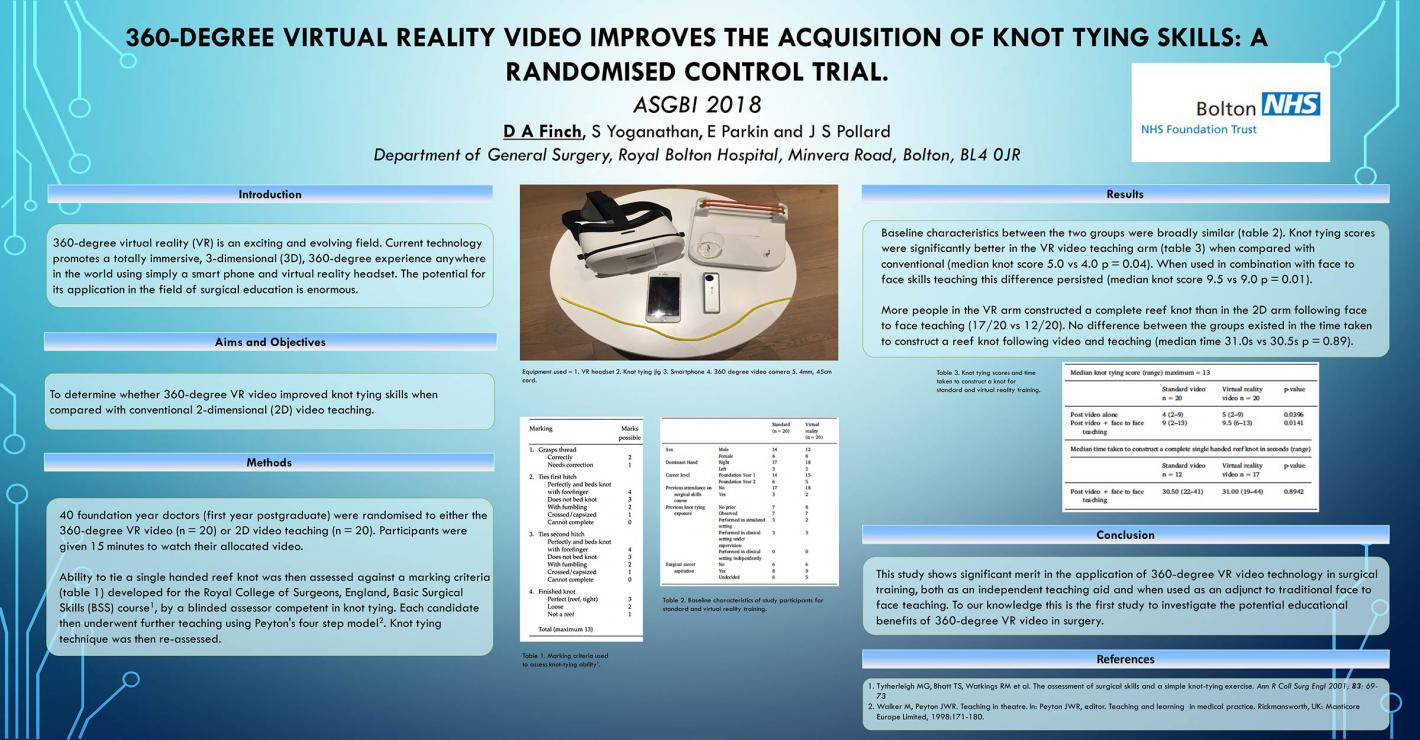360° virtual reality video for the acquisition of knot tying skills
Original article: link
360° virtual reality (VR) video is an exciting and evolving field. Current technology promotes a totally immersive, 3-dimensional (3D), 360° experience anywhere in the world using simply a smart phone and virtual reality headset. The potential for its application in the field of surgical education is enormous. The aim of this study was to determine knot tying skills taught with a 360-degree VR video compared to conventional 2D video teaching.
In April 2016, the world's first 360° VR surgery was streamed live. The viewer was able to watch an operation from a 360° camera directly above the patient and immerse themselves in the workings of the operating theatre, viewing different angles of the operative field as if they were in the theatre moving around the operating table. The close-to-real-life perspective this new technology brings could potentially revolutionise surgical training. In modern day surgical training, reduced working hours, rotapressures and the increasing use of alternative treatment modalities such as interventional radiology are changing a trainees exposure to certain procedures. Surgical trainees encounter numerous obstacles to time spent in the operating theatre enhancing their surgical skills. Virtual reality technology has the potential to bridge those obstacles, bring close to real life experiences, and accelerate learning curves. A fundamental skill that a surgical trainee is expected to learn and perfect during the early stages of their career is the ability to tie a reefknot. It is a skill that is traditionally taught in basic surgical skills courses worldwide. Videos are often used as an adjunct to aid development of this skill, typically in a two-dimensional (2D) format played on a standard high definition monitor.
This study shows 360-degree VR video to be superior to conventional 2D video in the acquisition of knot tying skills. This is the case for video teaching alone, and when combined with traditional face to face skills teaching.


